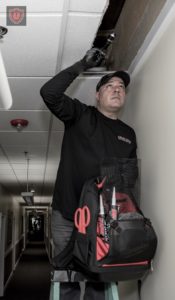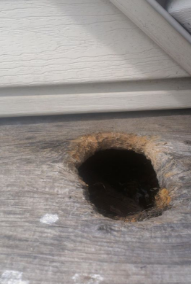Boston’s Rats Are in Charge. We Just Live Here.
They nest in our homes. They feed on our garbage. They breed faster than rabbits and can clear out a restaurant like a four-alarm fire. Boston Rat Exterminators battle a growing problem!
Photo via Wikimedia Commons
Boston Rat Exterminators
It’s approaching midnight on a blustery Friday in late fall, and Boston Common is nearly silent. The golden dome of the State House gleams in the moonlight as the nabobs of Beacon Hill doze in their multimillion-dollar homes. Nearby restaurant workers are lugging heaps of trash into alleyways. And me? I’m in hot pursuit of a burly brown rodent that’s hauling ass through the park.
In the beam of my flashlight, the rat looks to be as long as a grown man’s slipper and as agile as a sports car. It veers left across a paved walkway before scampering under a bench and then hugging a stone curb in an all-out sprint. As the little guy nears an ailing oak tree, three more rats dart out from the shadows, and together they vanish, like magic, into the gnarled roots.
As I head toward Boylston Street, several more rats—three, four, five?—dash up a small mound of dirt and slip between the stones of a crumbling retaining wall. Shining my flashlight into the gloom, I discover a network of burrow holes that look big enough to fit my forearm in (though I decide not to test this theory). Moments later, I spot another rat circling a metal trashcan. Sensing my presence, it flees into the exposed base of a nearby lamppost, where it peers out at me with black, beady eyes.
Rats! “Rulers Of The Night”
On any given night, thousands of rats are running wild through Greater Boston, gnawing their way into historical brownstones, defecating in popular eateries, and having ungodly amounts of sex in our public parks. Every time you walk through the Common, for instance, you’re stepping on top of a hidden world, complete with pecking orders, partnerships, and rivalries—just like us. Unlike people, though, rats use pheromones in their feces and urine to identify one another and communicate, and they smell each others’ breath to know which food is safe to eat and which isn’t. They decorate their nests with candy wrappers, memorize shortcuts to zip around the park unnoticed, and fortify escape tunnels for when exterminators come calling. It may sound whimsical, like something out of Ratatouille, but believe me—it’s not.
For centuries, Boston has been waging war against these vermin. In recent years, though, it appears that the rats have gone on the offensive, growing their ranks at an unsettling rate. In 2016, the city’s Inspectional Services Department logged more than 3,500 rodent-related complaints—a nearly 30 percent increase over the previous two years. Then a Jamaica Plain restaurant made headlines when one of its workers came down with a case of leptospirosis, a potentially fatal infection usually caused by exposure to rat urine (a disease rarely seen in so-called first-world countries). But the most shocking news—and what sparked my curiosity to check out the Common in the first place—arrived this past summer when Governingmagazine dropped a bombshell report showing that Boston had officially surpassed New York City in the number of in-home rat sightings, putting us in second place nationwide for this dubious distinction, trailing only Philadelphia. Culled from U.S. Census data, the findings revealed that about one in six Boston homes had disclosed close encounters with the rodent kind.
When I mention the study to a friend who lived on a particularly ratty street in Brooklyn before moving to Boston, he’s hardly taken aback. He currently lives across from the Public Garden and tells me that stepping outside for a nightly cigarette often leads to a stare-down with our furry fauna. “Boston rats are way more brazen than any New York City rats I’ve ever known,” he tells me. “Twice I’ve actually run away from them. Twice!”
Nor does news of the city’s rat problem surprise Bobby Corrigan, an internationally recognized expert with a PhD in urban rodentology who consulted on rodent-control programs for the Big Dig. Corrigan has studied infestations around the world and says old port cities like Boston have some of the worst. The nest I found near the retaining wall, he explains, is probably home to a family of 10 or so rats. That family is part of a colony, which can have between 60 and 100 members. In an area the size of the Common, Corrigan estimates that there are likely four distinct colonies. Like the Hells Angels and the Pagans, these colonies engage in turf wars, clashing over resources. “They’re very aggressive toward one another,” Corrigan says. “And as that park becomes too crowded, the rats of Boston Common become the rats of Beacon Hill.”
It’s easy to dismiss rats as just another cost of city living, but make no mistake
They’re shockingly destructive pests, teeming with harmful, disease-spreading bacteria and, according to one study, inflicting $19 billion worth of damage across the U.S. each year. Their relentless burrowing can erode a building’s foundation; their urine spoils tons of food each year; and their front teeth are like diamonds, strong enough to gnaw through wood, brick, and cement—not to mention live electrical wires, which can spark costly fires.
In response, Boston has ramped up its extermination efforts, while Cambridge and Somerville have formed special rodent task forces. City employees and private exterminators regularly hit the streets before dawn with buckets of poison, bait boxes, and snap traps. Though these tried-and-true methods may be effective, none is foolproof—and attempts to build a better rat trap have faced unexpected setbacks. One of Boston’s most recent experiments—which involved using dry ice to suffocate the little buggers—proved highly successful before the Environmental Protection Agency shut the program down.
While Boston is no stranger to rats, suddenly it seems like the little critters are staging the greatest comeback of their career. Many suggest that the development boom—with its endless groundbreakings, jackhammering, and excavations—has unleashed a biblical swarm of rodents and driven them toward the light. Others pin it on the mild winter of 2017. Or perhaps, as city officials insist, the uptick in sightings is merely the result of better reporting and data collection. The bigger question, though, is can anything be done to stop them? Because at this point, the only thing that seems certain is that as Boston keeps growing, so will its rat problem.
Talking About Rats
When it comes to talking about rats, combat metaphors often abound. And as anyone who understands the principles of war can tell you, rule number one is to know thy enemy.
In this case, that’s Rattus norvegicus, known better as the Norway rat or brown rat. At first glance, it is an entirely underwhelming animal: A typical adult measures up to 15 inches from snout to tail and weighs about a pound and a half, and these rodents live only about a year in an urban environment. Otherwise, though, it’s arguably Mother Nature’s most successful beast.
Behavior Of Norway Rats In Boston
Rats spend most of their life scurrying through the streets in search of water and food; an adult can consume as much as one-third of its body weight in a single day. Because they need to eat so much, they can’t afford to be picky and will feast on roaches, doughnut crumbs, week-old Chinese takeout—anything they can get their tiny mitts on. Rats are also highly intelligent, able to master puzzles, run through mazes, and express empathy to fellow rats—all reasons why scientists often use them in psychological experiments to learn about humans. Believe it or not, rats are exceedingly clean, keeping their nests tidy and fastidiously grooming themselves like cats. They’re also super-breeders.
Over the course of their short lives, male rats will hump just about anything in sight, including other males and dead rats, in hopes of procreating. But it’s the female rats that have among the most remarkable reproductive capabilities in the animal kingdom. After reaching sexual maturity a few months into life, their gestation period is only 21 to 24 days, and they can have up to a dozen pups in a single litter. Then, within 24 hours of giving birth, a female rat can ovulate, have intercourse, and become pregnant again. In other words: In a single night, two amorous rats can single-handedly trigger a domino effect that will spawn generation upon generation of offspring in a matter of months. “If everything is perfect, if you do the math, exponentially you can get up to 15,000 descendants in one year,” says Brandy Pyzyna, vice president of scientific operations for the pest control company SenesTech. “That’s why infestations can rebound so quickly.”
The brown rat’s origin story begins somewhere near Mongolia about 2 million years ago, long before the dawn of human history. Once Homo sapiens entered the picture, wherever people went, rats followed—eating their debris and garbage along the way. They trailed nomadic shepherds on the Grain Road through Central Asia and followed the merchants of the Silk Road west toward Europe. They even hitched a ride to the New World as stowaways on ships carrying early European immigrants.
History Of Rats In The US
The first reports of brown rats in the American colonies date to 1775, and the animals quickly became regular residents in filthy, crowded industrial centers such as Baltimore, Philadelphia, New York, and Boston. They weren’t the first rat species on the scene, however: Rattus rattus, the smaller black rat—historically loathed as a transmitter of bubonic plague—had arrived more than a century earlier. But the larger and more-aggressive brown rat, better suited for cold winters, easily bullied the black rat out of town and before long claimed the Northeast as its own.
Rats Living Underneath Boston
Beneath Boston today is a veritable graveyard of colonial-era rats, says city archaeologist Joe Bagley, who’s found evidence of rat tunnels on Paul Revere’s property and once even unearthed the skeleton of a rat in the North End that died next to a 19th-century Catholic Miraculous Medal. Nothing, however, can compare with the grisly discovery Bagley’s team made in a garden at the Old North Church in August 2016. They were digging six feet below ground near a cistern when the first rat skull surfaced, followed in quick succession by a second, a third, and a fourth. “We couldn’t quite figure out what was going on,” says Liz Quinlan, a zooarchaeologist who was on site that day. “We were essentially pulling out buckets of rats.” By the end of the project, they had removed 747 rat bones (“which is insane,” she assures me). While Quinlan suspects that the rats drowned in the latter half of the 19th century, she can’t yet say if they all perished at the same time.
Until the late 1800s, the most sophisticated way to kill rats was to set dogs on them. By the turn of the century, however, Americans had finally started using technology to get serious about extermination. As cities grew, so did rat populations, and pest control emerged as a social justice and public health issue. The opening salvo came in 1894, when the U.S. government issued the first patent for a spring-loaded trap. While a welcome addition to any Victorian exterminator’s arsenal, the design had one glaring flaw: Each trap could kill only a single rat.
Soon, Bostonians began taking matters into their own hands. In 1917, the Boston Women’s Municipal League, for instance, sponsored a derby-style competition, dubbed “Rat Day,” in which participants earned cash in exchange for dead rodents. The winner, a Mr. Rymkus of Brighton, slaughtered a remarkable 282 rats (and earned $150 in prize money, the equivalent of $3,100 today).
It wasn’t long until poisons entered the picture, and in the 1940s scientists discovered that warfarin (which today is best known as the heart medication Coumadin) was great at killing rats by thinning their blood to the point where they essentially drowned. Today, these anticoagulant poisons remain a popular choice for pest control, along with neurotoxins and other deadly chemical compounds. Yet in the fight against vermin, Boston is still trying to make a dent. Yes, the problem is less visible than a hundred years ago, but that doesn’t mean we’ve solved it. Not only are the rats still here—they’re flourishing.
Here’s what the modern war on rats looks like from the front lines with Boston Rat Exterminators
It’s a few minutes past 8 a.m. on a cold Wednesday in November, and Jeff Kilian is pulling on a pair of black latex gloves outside of a Brighton gas station. Before heading inside, he grabs a paint bucket full of rat poison—it looks like red-speckled chunks of Play-Doh—and begins pointing out signs of rat activity. Once you know what to look for, he says, you see the signs everywhere: black droppings the size and shape of fennel seeds; dark, greasy streaks on the pavement that indicate a favorite path; and plastic trashcans with holes gnawed through the bottom. He steps into the convenience store, slides a black plastic bait box from under the soda cooler, pops it open, and reveals a handful of desiccated rodent carcasses. It’s an olfactory nightmare. Over in a storage room, he pulls out two snap traps, each of which has a furry dead rodent in its clutches, and drops the corpses in a plastic bag. “Think about what my truck smells like at the end of the day,” he says.
Then it’s on to the next assignment. As Kilian, a Boston Rat Exterminator who works for Ultra Safe Pest Management, weaves through Storrow Drive gridlock on his way to South Boston, he politely informs me that “exterminator” is something of “an archaic term.” After all, he’s licensed by the state, takes continuing education courses, and can talk in exquisite detail about the life cycles of bedbugs, Asian long-horned beetles, and, of course, rats.

Pest-control expert Jeff Kilian of Ultra Safe Pest Managment / Photograph by Jeff Brown
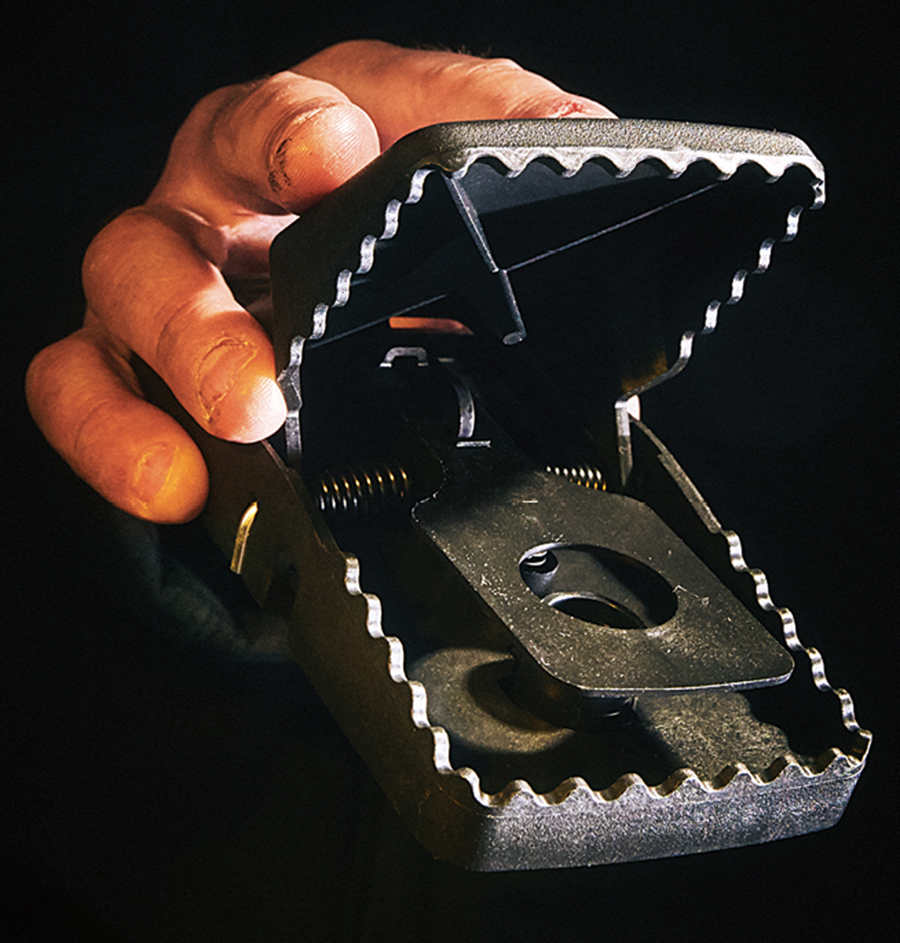
Kilian shows off the arsenal of weapons he uses against rats in alleyways and basements across Boston. / Photograph by Jeff Brown
Jeff Kilian Of Ultra Safe Pest Management
Thirty-seven years old, with hazel eyes and a goatee, Kilian didn’t grow up dreaming of a life in pest control. He was born in South Boston, worked construction with his father as a young man, and took odd jobs along the way. Then, about 15 years ago, he came across a help-wanted notice in the classifieds. The listing was short on details, but said applicants should be comfortable with heavy lifting and digging. “That’s me all day,” Kilian thought. He called the number, only to find out it was a pest-control company. A few days later, he had a phone, a truck full of poison, and a list of needy clients.
At first, Kilian says he suffered a crisis of conscience. Killing creatures all day long took its toll. Rats began polluting his dreams. For a while, he couldn’t walk into a restaurant without scanning it for telltale signs of infestations. Today, though, having spent most of his adult life in the trenches of urban-animal warfare, he’s got the thousand-yard stare to match.
As far as rat stories go, Kilian’s can hang with the best of them. Some of his most harrowing moments have come after getting a call from a fancy restaurant. He claims he’s caught a 5-pound rat at an eatery on Beacon Hill and seen a whopping 7-pounder in the sewers beneath a Back Bay dining room. But the craziest thing he says he’s ever seen? That occurred in the early 2000s along the seawall that separates the North End from Boston Harbor. Hundreds of rats had set up shop and were constantly raiding nearby restaurants, chewing through the floors and walls. One day, as Kilian was making the rounds by the waterfront, he glanced over and saw a swarm of rats overtaking a seagull. “It was eaten alive,” he says, matter-of-factly. “I saw it get devoured.”
After battling traffic for another 20 minutes, we finally arrive at the next job: a massive industrial brick building in South Boston. Kilian is no stranger to this address. “I’ve killed so many rats here, it’s ridiculous,” he says. Before going inside, he leads me over to an alleyway near the loading docks and starts stomping on the muddy gravel, the best way to find his quarry. Sure enough, his construction boot sinks through the ground and he’s ankle-deep in a rat burrow. Properly rat-proofing a business is akin to a small-scale construction project, requiring concrete work and retrofitted doorways with stainless steel sweeps. Oftentimes, though, getting commercial property owners to commit to that type of work is difficult, if not impossible.
Kilian’s client, who works below the ground floor, is in the food-services industry. He understandably doesn’t want to be identified, but he keeps a vigilant line of defense against rats, fearful that a smattering of turds could compel a health inspector to shut down his businesses indefinitely. Yet no matter what he does, he feels as though countless forces are working against him. The landlord, he says, is responsible for repairing the loading dock and patching the building’s foundation but hasn’t done it. Meanwhile, he tells me, the tech company upstairs has no rodent control in place, as evidenced by the rat that ran across its floors earlier this morning.
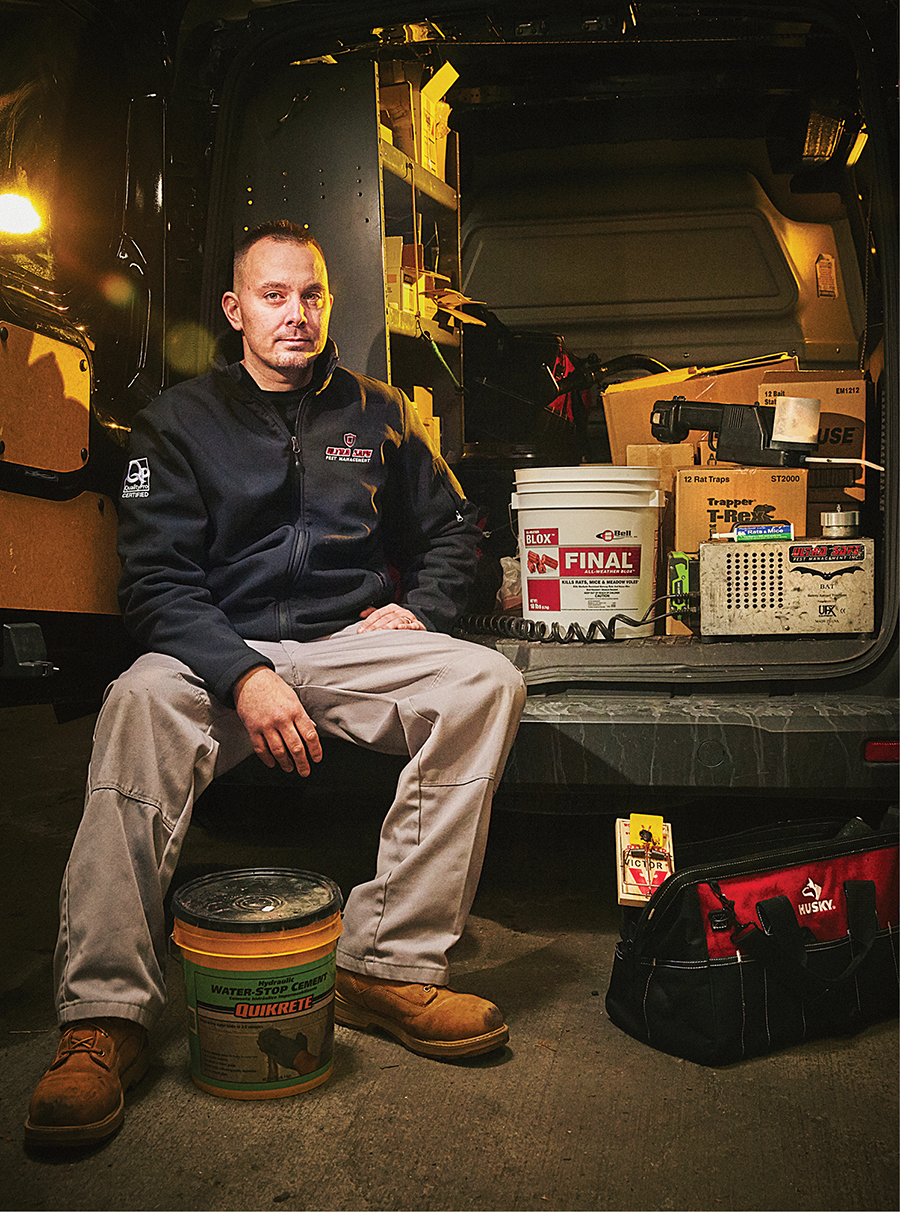
Photograph by Jeff Brown
When Kilian finishes his inspection, his client, visibly flustered, tells him to go ahead and schedule the necessary concrete work to rat-proof the business, and to take care of it as soon as possible. He’d rather pay out of pocket and hound the landlord for reimbursement than risk a rat breaching his perimeter. As he walks us out the front door, he points to a sprawling construction site directly across the street. It’s a common scene in the city these days: a former industrial site being razed to make room for a new plot of luxury condos. Kilian’s client insists that ever since the bulldozers arrived, the rat problem around his building has gotten worse. “Someone should drop a dime on them,” he says with a smile.
As we pile back into the truck, Kilian begins chatting and says he’s going to stop at the nearest Dunkin’, but it’s all I can do to keep my mind off the stench of dead rodents emanating from inside.
After saying goodbye to Kilian, I couldn’t stop thinking about what his client had said: that construction was stirring up the rats. Over the course of reporting this story, I repeatedly heard that the city’s current building boom is fueling the rat problem. The argument goes that ripping up the streets to make way for our tony new high-rises in the Back Bay, the Fenway, and the Seaport is surely displacing rat colonies and forcing rodents above ground.
It sounds logical—yet William “Buddy” Christopher, commissioner of the city’s Inspectional Services Department, says it’s simply not the case. “We don’t see anything that’s tracking along those lines,” he tells me. “The Seaport is probably the area with the most big-building development, and we don’t see a drastic increase of rat populations over there.”
Corrigan, the rat expert, agrees and notes that construction has long been a scapegoat for cities’ rat problems. “There’s this urban myth that construction causes rats,” he says. That doesn’t mean, though, that rodents aren’t attracted to construction sites. After all, the plethora of debris and building materials provides ample shelter, while construction workers and their lunches produce plenty of garbage for vermin to eat. But Corrigan insists that jackhammering isn’t going to trigger a rat-pocalypse—especially in Boston, thanks to our stringent regulations for new buildings.
In order to begin construction here, builders and developers have to put together a rodent mitigation plan before a shovel ever hits the ground. Also required are monthly reports once construction gets under way, followed by a post-construction report when the project is finished. It’s a policy with roots in the Big Dig, when residents and city officials feared extensive tunneling was going to unleash a rat tsunami. To ease anxieties, city officials developed a systematic strategy that pinpointed where the rats were and attacked them well before construction began. While it might sound like common sense, the idea turned out to be revolutionary, and Boston’s approach has since been heralded, according to one report, as the world’s first “comprehensive and centrally coordinated rodent control program” linked to a major construction project and has served as a model for cities around the word.
So if the construction boom isn’t fueling Boston’s rat problem, what is? Christopher, of Inspectional Services, doesn’t deny there are rat troubles, but he insists that the soaring number of complaints is misleading. The city’s 311 system, which launched in 2015, makes it so easy to report rats, he claims, that it’s not uncommon to get multiple complaints for one location. Before 311 launched, reporting a rat was a cumbersome process, Christopher says. Now, residents can do it from their smartphones within seconds of spotting a scaly tail.
That’s not to say Boston is idly twiddling its thumbs. Every day, teams of pest-control experts hit the streets to bait sewer lines, patrol public alleyways, and follow up on reports. Some nearby cities are pushing the war on rats into uncharted territories. For instance, Somerville recently worked with the company SenesTech to test a new poison that not only kills rats, but also makes it harder for them to reproduce. While the cutting-edge chemicals—which are associated with infertility—proved mostly effective, Somerville has not committed to the approach. After all, as Boston city officials recently learned, deploying new weapons against rats isn’t always easy, and there are rules of engagement.
Dry Ice For Rodent Control
In 2016, Boston Inspectional Services teamed up with researchers at Harvard and MIT and began packing large rat nests with dry ice, which evaporates into carbon dioxide and suffocates the animals. The city tested the method on infestations in overgrown cemeteries and even used it on a massive burrow in the Public Garden. “It was amazingly effective,” Christopher says. “Probably the most humane way to deal with rodents.” But then the federal EPA got wind of what was going on and told the city it was not allowed to use dry ice because it was not an officially registered pesticide. Since then the necessary agencies have been working together to remedy the problem, but it’s a complex process that includes the EPA, the Massachusetts Department of Agricultural Resources, and the city. While the agencies wade through a sea of red tape, an untold number of rats have surely spawned in these same areas.
Ultimately, though, controlling rats isn’t really about coming up with new ways to kill them. It’s about effectively managing the endless stream of trash that flows from our homes and businesses, along with making it difficult for the animals to find warm, safe places to nest. It means that residents shouldn’t dump garbage on the sidewalk and that parks departments should know which type of ground cover is hospitable to rats and which isn’t. It means that restaurant owners should seal up their dumpsters every night and that landlords should quickly call an exterminator when a tenant complains. Needless to say, these are lofty ambitions for a city where neighbors get in fistfights over parking spaces and absentee landlords abound. Even if we do everything right, the simple fact is that rats are here to stay—and they are poised to spread farther and farther into the suburbs. “Rats follow rail lines and sewer lines,” Corrigan says. “They follow sprawl.”
We’re already seeing that scenario play out: This past fall, the sleepy bedroom community of Belmont was shocked when town officials closed a popular playground due to a rat infestation. Naturally, I had to check it out. When I arrived, the quaint little park—which sits next to an elementary school—was pitch-black and eerily quiet. The slides, swings, and jungle gym, which the rats had burrowed under, were cordoned off behind a makeshift wooden fence on which hung a metal sign that read, “Park Closed for Maintenance.” I scanned the ground with my flashlight, but apparently the rats had already packed up and moved along.
After wandering around for several minutes, I bumped into John Analetto, who has lived across from the park for decades. In all that time, he says he’s never once seen a rat—not on his property or in the playground. He found the news of the infestation deeply upsetting. It’s an incredible park, he says, and there’s nothing he loves more than the sound of parents and children playing in it. “Nobody likes a rat,” he tells me before heading back to his house. “The only good rat is a dead rat.”
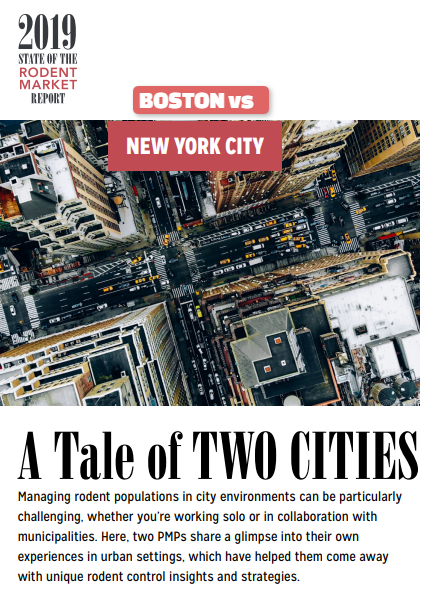

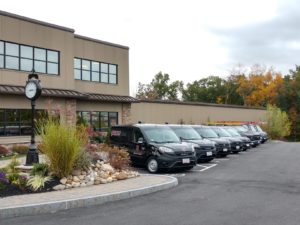

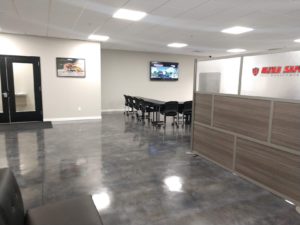






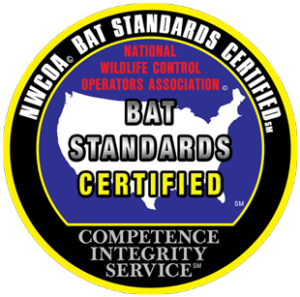

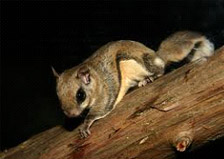


![[NECN] The Top 5 'Rattiest' Areas in Boston](https://media.nbcboston.com/images/620*349/Rats+Thumb.png)


